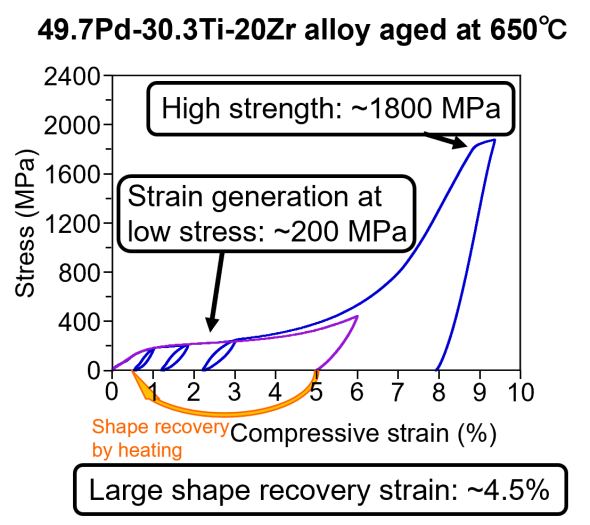-
About
- Kyoto Prize
-
Research Grants
-
Social Contributions
- Events
- News
This website uses cookies to improve the user experience. If you continue on this website, you will provide your consent to our use of cookies.
About
Research Grants
Social Contributions

Assistant Professor,Institute of Space and Astronautical Science, Japan Aerospace Exploration Agency*Profile is at the time of the award.
2020Inamori Research GrantsScience & Engineering
I would like to express my sincere gratitude for the Inamori Foundation Research Grant. With your support, I would like to continue my research and contribute to making the world a better place.
Alloys composed of Ti (titanium), Zr (zirconium), Ni (nickel), and Pd (palladium) were prepared by arc melting with varying compositions, and their driving temperatures and crystal structures as shape memory alloys were systematically investigated. As a result, 49.7Pd–(50.3-x)Ti–xZr (at.%) ternary alloys (x = 15–20) and those alloys with a small addition of Ni were selected as candidate shape memory alloys with high driving temperatures above 100°C, high alloy strength and large shape recovery strain. Among these candidates, we focused on the 49.7Pd–30.3Ti–20Zr (at.%) alloy and investigated the optimization of heat treatment conditions. By clarifying the effects of heat treatment temperature and duration on the driving temperature and the type and size of precipitates, an excellent shape memory effect with strain generation at very low stress (200 MPa) and shape recovery as large as 4.5% with subsequent heating was obtained under the optimum heat treatment temperature (650°C) condition. Although the number of driving cycles is limited to one to several, the new shape memory alloy is suitable for applications such as solar array panel deployment in space probes.

Science & Engineering
